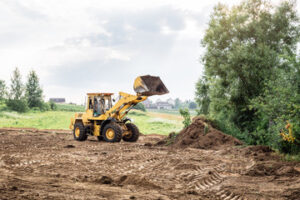Kitchen Renovation Houston is often complicated by structural elements that are uncovered during the remodeling process. These can delay a project and raise costs.

Choose durable materials that are low maintenance and long-lasting for your cabinets, countertops and appliances. Consider natural materials for a warm look, but keep in mind that these may be more susceptible to damage and need regular care.
When you embark on a kitchen remodel, the layout of your space is just as important as the materials or appliances. A well-designed layout optimizes functionality and creates an appealing look. A professional can help you determine the best layout for your space. The kitchen is a high-traffic area, and the layout can make or break your space’s ability to perform essential activities like cooking, eating, and entertaining.
There are several different kitchen layouts that can accommodate your lifestyle and budget. The most common are L shapes, U shapes, and galley kitchens. Each has its own benefits and disadvantages, so consider which one is right for your home.
A galley kitchen is ideal for smaller spaces because it saves wall space by placing all the workspace on a single wall. This layout works well if your kitchen opens to a dining room or living room, as it can create a spacious, open feel in the main area of your home. However, it’s important to pay attention to the work triangle so you don’t place your sink, stove, and refrigerator too close together. It’s also a good idea to add a bar-height counter to your kitchen island to add more seating and storage.
If you choose a U-shaped kitchen layout, it’s important to keep the work zone away from entrance doors and walkways. Otherwise, it can take a long time to get from one end of the kitchen to the other. U-shaped kitchens are ideal for large spaces because they provide ample storage and plenty of workspace.
When choosing a kitchen layout, it’s a good idea to opt for a traditional style rather than a trendy design. Trends can quickly become outdated, so opt for classic colors and simple shapes that will stand the test of time. You can still incorporate trends through small elements, such as hardware and light fixtures.
You can find kitchen pictures and designs online to inspire you, but your personal preferences will play a role in the final design of your kitchen. For example, you might prefer an L-shaped layout with a dining area or you may want a single wall with an I-shaped countertop. Once you decide on a layout, you can use Sweeten to connect with contractors and bring your project to life.
Design
When designing a kitchen renovation, functionality is paramount. Your kitchen should be able to accommodate your family’s unique needs and lifestyle. Take into consideration the number of people in your household, how often you entertain guests, and what kind of cooking you do. This information will help your designer create a layout that meets your specific needs while enhancing the look of your kitchen.
You can also choose to add a variety of eye-pleasing details to your kitchen. A bold backsplash tile, fancy floors, and a sizable range hood are easy ways to add visual interest to your new kitchen design. However, it’s important to balance these features with a simple color palette and streamlined surfaces. This will prevent your kitchen from feeling too busy or overwhelming.
Before you hire a contractor, ask for referrals from friends or family members who have used the services of the company. Check the contractor’s licenses and professional affiliations to ensure they are qualified to work on your home. Request detailed bids from several contractors to compare prices and scope of services. Once you have narrowed down your options, select a contractor whose design and build service best match your needs.
If your current cabinets are in good condition, you may be able to save money by opting for cabinet refacing instead of complete replacement. This will allow you to change the style and color of your cabinets for a refreshed look without breaking the bank.
Kitchen remodels can be time consuming, but hiring a competent contractor will make the process go as smoothly as possible. A good contractor will work efficiently and communicate clearly throughout the project. They will also keep you updated on progress and potential delays.
Kitchen renovations can be an excellent way to increase the value of your home. But it’s important to consider the ROI before investing in a major remodel. A good realtor and interior designer can offer guidance on what upgrades will add the most value to your home. They can also help you avoid common regrets that come with remodeling a kitchen.
Materials
The materials you choose for your kitchen renovation will have a huge impact on its design. High-quality materials not only add to the aesthetic, but also increase durability and value. However, it’s important to balance quality with cost. You want to spend more on items that will make the biggest difference, such as countertops or cabinetry, and save on those elements your guests won’t notice.
Another way to reduce costs is by recycling or repurposing materials from your old kitchen. For example, reusing wood cabinets and refinishing them is more cost-effective than buying new ones. Likewise, salvaged tiles or metal can be used as backsplashes or other decorative touches in your new kitchen. However, it’s important to check with your local laws and regulations before reusing any materials.
Before you start shopping for materials, make a list of must-haves and nice-to-haves. This will help you define your budget and establish priorities for the remodel. It’s also a good idea to consult with professional kitchen remodeling companies, who can provide expert guidance and top-quality materials at a reasonable price.
Whether you’re refacing or replacing your cabinets, the type of wood you choose will have a big impact on your overall kitchen design. Hardwoods like oak and birch are more durable than softwoods, and they are also more moisture-resistant. Choosing hardwoods can help protect against warping and swelling, which is common in high-traffic areas such as kitchens.
Aside from cabinetry, the countertops are another important element in your kitchen. Many homeowners choose granite or quartz for their countertops, which are heat-resistant and require little maintenance. Other options include ceramic or porcelain tile, glass, and metal. These materials can be arranged in a variety of patterns to create a unique and custom look.
The backsplash is an essential part of your kitchen’s aesthetic. It protects the walls from moisture and food stains, and it can also add color and texture. There are a variety of backsplash options available, including stainless steel, copper, and natural stone. Each material has its own benefits and drawbacks, so it’s important to find one that fits your needs and style.
Budget
The budget for a kitchen remodel can vary based on size, scope, and finish level. The cost of the kitchen’s materials is a major factor. Flooring choices, countertops and backsplashes are all cost-drivers as well as lighting fixtures and kitchen hardware. The finishing touches such as paint, appliances and other accessories will also impact the overall cost.
There are several ways to keep the project within a reasonable budget without sacrificing quality. For example, choosing a lower-cost countertop material like butcher block or laminate, refacing cabinets instead of replacing them, installing a simple tile backsplash, using particleboard instead of plywood in areas where it won’t be seen, doing the demolition work yourself and other money-saving tricks can help you achieve your dream kitchen on a tight budget.
It’s best to have some wiggle room in your budget for unexpected expenses. These can pop up during the renovation process, especially if you’re remodeling an older home. For example, if you’re removing a wall to open up the floor plan, there may be electrical wires, water lines and/or ductwork that need to be rerouted, which can add significantly to the cost of the project.
You also want to make sure you’re spending your money wisely. It’s important to consider if you’ll recoup the costs of your kitchen upgrade in the future. This will depend on how long you’re planning on living in your home and the resale value of other homes in the neighborhood.
If you’re planning on selling your home in the near future, it’s smart to focus on the functional aspects of your kitchen and choose upgrades that will be appealing to potential buyers. For example, if you have a lot of wasted space or would like to change the aesthetic, a minor or full remodel might be the answer.








